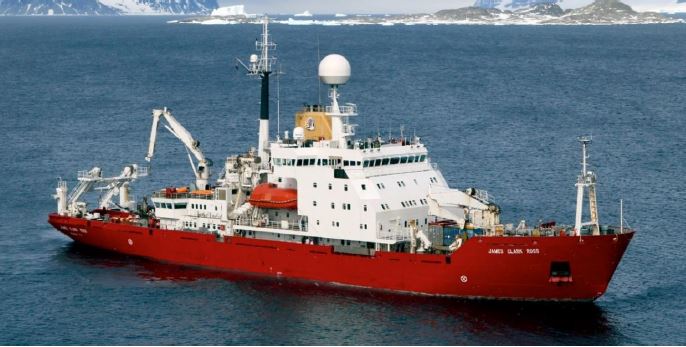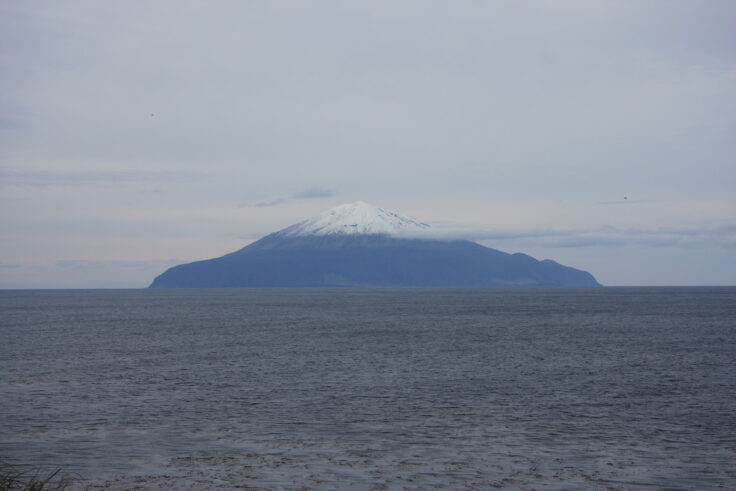The UK Prime Minister has announced today (Friday 13 November) a new Marine Protected Zone around the overseas territory of the island of Tristan da Cunha. The move is part of the Blue Belt Programme, which aims to safeguard biodiversity, wildlife habitats and ecosystems in some of the remotest places on Earth.
The announcement of a new Marine Protection Zone by Tristan da Cunha will safeguard the future of seven-gill sharks, yellow-nosed albatross and rockhopper penguins in the remote archipelago.
The isolated UK Overseas Territory, home to the world's most remote human settlement, has declared the largest fully protected marine reserve in the Atlantic Ocean at 687,000 square kilometres (265,252 square miles). This will close over 90% of their waters to harmful activities like bottom-trawling fishing, sand extraction and deep-sea mining.
Through the UKRI Global Challenge Research Fund project scientists at British Antarctic Survey worked with Tristan da Cunha Government and their partners to collect scientific information on the offshore sea mounts. Research cruises in 2018 and 2019 on the NERC Royal research vessels RRS James Clark Ross and RRS Discovery collected biological information on the seamounts to inform the designation of their marine protection strategy. BAS scientists worked closely with CEFAS and other project partners to map the seafloor and ocean biodiversity on several of the key underwater mountains.

Dr Simon Morley, senior ecologist at BAS who advised the team on Tristan da Cunhas says:
"It's fantastic to hear the announcement of this new marine protection zone. This designation ensures the protection of the Islands livelihood and the unique biodiversity of this region, which are heavily reliant on the health of their oceans. I am proud to have been able to work with Tristan, helping collect the evidence to underpin this decision and look forward to being able to continue our partnership into the future."
Tristan da Cunha joins other UK Overseas Territories who protect their waters with the support of this initiative, including Ascension Island, British Antarctic Territory, South Georgia & the South Sandwich Islands, the British Indian Ocean Territory, the Pitcairn Islands and St Helena – covering an area 17 times the size of the UK and over 1 percent of the Earth's entire ocean.
This achievement comes with one year to go until the UK hosts the UN Climate Change Conference (COP26) - to be held in Glasgow in November 2021. As President, the UK Government will bring world leaders together to drive progress on tackling climate change and forge new ways to protect marine biodiversity and tackle plastic pollution in our ocean.

Prime Minister Boris Johnson says:
"We are in danger of killing our seas. We are warming them up, making them more acidic and every day we fill them with turtle-choking, dolphin-poisoning plastic that is turning our ocean into a vast floating rubbish dump.
"That's why I am delighted that the United Kingdom has now protected more than 4.3 million square kilometres of the world's ocean, following Tristan da Cunha's announcement.
"I am now calling on other nations to join us in our ambition to protect 30 per cent of the world's ocean by 2030. We need collective global action if we are to bequeath a world that is every bit as wonderful and magnificent as the one we inherited."
The waters around the UK's Overseas Territories are some of the richest and most biologically diverse in the world - but they face a range of threats, including climate change, damaging fishing methods and unsustainable extractive activities.
Tristan da Cunha, for example, has 25 seabird species that breed there alone, four of which are unique to the islands and are at threat of extinction – the Tristan Albatross, Atlantic Yellow-nosed Albatross, Atlantic Petrel and Spectacled Petrel.
UK Minister for the Environment, Lord Goldsmith, says:
"We are hoovering life out of the ocean at an appalling rate, so this new marine protected area is really a huge conservation win and a critically important step in protecting the world's biodiversity and ecosystems.
"Tristan da Cunha islanders and this coalition of NGOs and Foundations have done an extraordinary thing and deserve real gratitude and praise. It means our fantastic Blue Belt programme has over 4million square kms of protected ocean around the UK Overseas Territories."
The Royal Society for the Protection of Birds (RSPB), also played an important role. For the past two decades the RSPB has worked closely with the local community in Tristan da Cunha and conducted vital research to secure long-term protection.
RSPB CEO, Beccy Speight, says:
"This small community is responsible for one of the biggest conservation achievements of 2020. We are enormously proud to have worked with our friends on Tristan, the UK Government's Blue Belt programme and wider partners to achieve this world-leading designation. This will protect one of the most pristine marine environments on the planet, home to tens of millions of seabirds, threatened sharks, little-known whale species and booming seal populations."
The international partnership that supported Tristan da Cunha's decision to designate a highly protected Marine Protection Zone comprises of RSPB, National Geographic Pristine Seas, Blue Nature Alliance, Becht Family Charitable Trust together with Blue Marine Foundation, Wyss Foundation, Kaltroco, Don Quixote II Foundation and the Great British Oceans coalition.
The Blue Belt Programme 2016-2020 highlights are outlined in this brochure.






